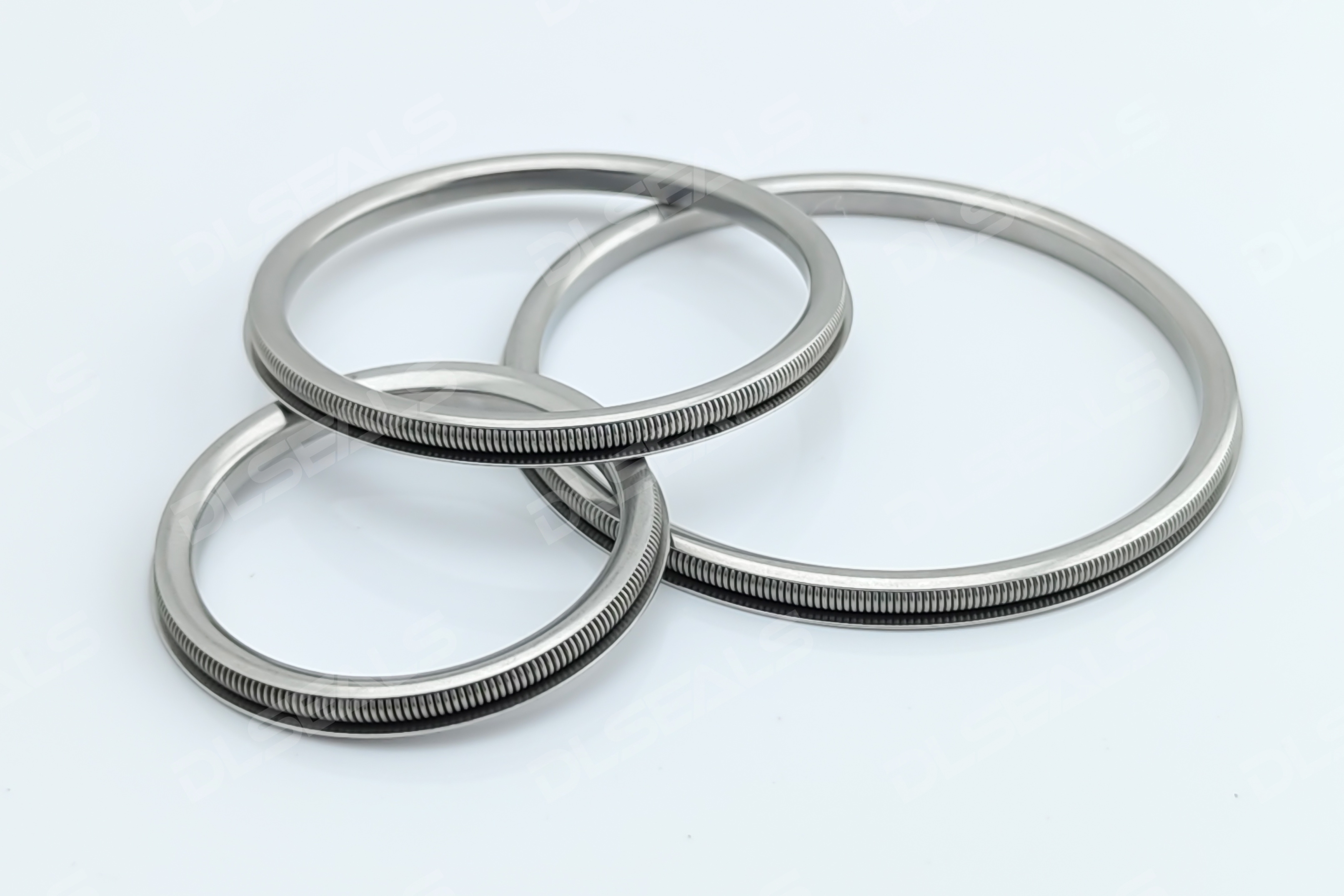In critical aerospace systems—rocket engines, attitude control valves, and space station modules—metal seals perform three vital functions: containing cryogenic propellants (-269°C liquid helium), maintaining cabin pressure, and blocking cosmic particle ingress. Their reliability directly determines mission success and crew safety, requiring maintenance-free performance under extreme conditions: instantaneous transitions from 3000°C flames to -269°C cryogenics, intense radiation (>10⁶ rad/year in GEO), microgravity, and high-frequency vibration. This analysis examines aerospace metal seals through four dimensions: materials, structural mechanics, space validation, and emerging trends.
I. Extreme Challenges & Performance Metrics
Four ultimate challenges:
- Thermal cycling: -183℃ (LOX tank) ↔ 3000℃ (combustion chamber) causing embrittlement/creep
- Pressure shocks: 0→35MPa in 10ms (thruster valves) inducing micro-slip leakage
- Radiation degradation: >10⁶ rad/year particle bombardment accelerating aging
- Corrosive media: NTO/MMH bipropellants triggering intergranular corrosion
Key specifications:
- Leak rate: ≤1×10⁻⁹ mbar·L/s (per NASA-STD-5012 helium testing)
- Service life: >15 years (satellites) or >1000 cycles (launch vehicles)
- Mass reduction: ≥50% vs conventional seals
II. Material Systems: Space-Proof Alloy Matrix
Core alloys:
- Inconel 718: 100J impact toughness at -196℃, 620MPa@800℃ (LH₂ turbopumps)
- Ti-3Al-2.5V: Ductile at -269℃, 480MPa@400℃ (ISS oxygen lines)
- Haynes 242: NTO/MMH corrosion resistance, 550MPa@800℃ (thrusters)
- Mo-47Re: 420MPa@2000℃, >100 dpa radiation tolerance (nozzles)
- Nb-1Zr: 25% elongation at -269℃, 220MPa@1200℃ (nuclear propulsion)
Functional coatings:
- Solid lubricants:
- Gold plating (0.5-2μm): μ=0.1 in vacuum, prevents cold welding
- Sb₂O₃-doped MoS₂: Stable at 350℃ under irradiation
- Barrier layers:
- Ion-plated aluminum: 10× longer NTO resistance
- Laser-clad ZrO₂/Y₂O₃: Withstands 3000℃ gas erosion
III. Structural Innovation: From Elasticity to Topology
Landmark designs:
- Artemis lunar lander: Inconel 718 C-seal + Au/MoS₂ gradient coating, achieving <5N·m breakout torque at -183℃ LOX (conventional >30N·m)
- JWST cryocooler: Laser-textured Ti-3Al-2.5V bellows, leak rate <5×10⁻¹¹ mbar·L/s at 7K
IV. Space Validation Protocols
Testing regimes:
- Thermal vacuum cycling (ESA ECSS-Q-ST-70-04): -196↔150°C, 50 cycles, <10% leak drift
- Random vibration (NASA-STD-7003): 20-2000Hz, 20Grms, 3-axis structural integrity
- Proton irradiation (ASTM E521): 5MeV, 10¹⁵ p/cm², >85% tensile strength retention
- Propellant exposure (MIL-STD-1522A): 70℃ NTO/MMH immersion ×30 days, <1mg/cm² mass loss
Monitoring tech:
- Quadrupole MS (Pfeiffer PrismaPro): 10⁻¹³ mbar·L/s detectability
- Robotic helium sniffer (ESA): 0.1mm leak localization
- Embedded FBG sensors: Real-time strain monitoring (ISS hatch)
V. Engineering Milestones
- SpaceX Raptor: Laser-textured Haynes 242 C-seal sustains <1×10⁻⁹ mbar·L/s leakage after 50 reuses under LOX/CH₄ cycling (-162↔-161℃, 300bar)
- ISS docking system: Dual-pressurized metallic O-rings achieve 16-year zero-leak operation with <0.1Pa/day pressure decay
- Voyager RTG: Nb-alloy knife-edge seal + ZrO₂ TBC withstands 1100℃ decay heat & micrometeoroids over 45 years (22B km)
VI. Emerging Frontiers
- Smart materials:
- NiTiNb shape-memory alloys: Autonomously compensate wear at -100℃
- Microencapsulated GaInSn: Self-healing cracks via liquid metal flow
- Additive manufacturing:
- Topology-optimized lattices: 40% mass reduction with equivalent stiffness
- Gradient WC-Inconel structures: 2000HV hardness at interfaces (LPBF-fabricated)
Epilogue: The Atomic-Scale Guardianship
From Apollo’s metallic O-rings to JWST’s cryogenic seals, aerospace sealing history epitomizes the trilogy of material genomics, structural topology, and extreme validation:
- Materials: Nb-alloys conquer -269℃ ductility; Mo-Re alloys endure 100 dpa radiation
- Structures: C-seal arches achieve 3000MPa contact pressure (beyond material limits)
- Verification: 10⁻¹³ mbar·L/s detection ≈ identifying single helium atom escape from a football field
Future missions face lunar dust abrasion, Martian salt fog, and nuclear transmutation. Next-gen seals integrating quantum sensing leakage monitors and AI-driven material design will become the ultimate safeguard for human deep space exploration.
Post time: Jun-11-2025

